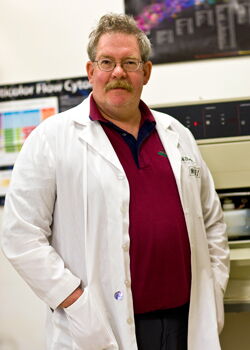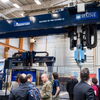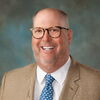Healthy increases | Growing worldwide demand makes the biotech industry Maine's export darling
In March, Joe Chandler, owner of Maine Biotechnology Services Inc. in Portland, was making sales calls from his company’s office in Bangkok, trying to gain an Asian foothold in what he believes will be the world’s hottest, emerging market for biotech products.
“Most companies would agree the growth is probably going to be much steeper exporting to Asia than to Europe,” says Chandler, whose company develops antibodies for research and development in pharmaceutical and diagnostic applications. In 2009, Maine Biotechnology Services saw 25% of its $5 million in revenues come from exports.
Chandler opened the Bangkok office in 2008 and expects the company will eventually set up a laboratory and production facility in Thailand to bring its products closer to that market. He sees exports as a growing market for his products.
And he isn’t alone.
Several biotech firms in Maine have seen sharp increases in export sales as demand for their products grows worldwide. Biotech products — from markers to detect cancer to tests for melamine in milk (the contaminant that sickened thousands of Chinese children in 2008) — accounted for one of the few bright spots in what was otherwise a down year for Maine exports.
The state’s biotechnology exports were up 20% in 2009 compared to 2008, according to the Maine International Trade Center. Exports from Maine life sciences companies — which includes areas such as biomedical science, bio-engineering and medical devices — and biotech companies jumped from more than $54 million in 2008 to more than $65 million in 2009.
Within that category, exports of products such as human blood, animal blood components, toxins and cultures increased 198% over the same period to more than $3.5 million, according to MITC. Extracts of glands or other organism secretions were up 203% to more than $10.6 million. All are indications of a growing world demand for improved medical care and healthier environments, which could be a boon to the 140 Maine companies that manufacture biotechnology products or equipment used by the industry.
Strong demand remains steady
Gary Goodrich, owner and president of Bioprocessing Inc. in Portland, is president of the Biotechnology Association of Maine, a group that represents about 45 biotech companies. His business specializes in developing tumor markers to help diagnose and manage various forms of cancers.
Goodrich says one-third of his company’s more than $4 million in sales in 2009 involved exports overseas to countries like Germany, the United Kingdom, Spain, Switzerland, France and Japan. He believes the increase in biotech exports by Maine companies is fueled by two things: a steady demand for biotech products and medical devices from Europe and Japan where there are universal health care delivery systems; and some biotech products made here that have not gained U.S. Food and Drug Administration approval, but can be sold overseas.
“I’m not going to call it recession or inflation proof. It tends to be more buffered,” says Goodrich about the global biotech market.
Goodrich says one of his company’s largest clients is Germany-based Siemens AG, an international firm that has several facilities throughout Europe and elsewhere. Siemens has a health sector diagnostics division that sells biotechnology products to health care facilities worldwide. According to Siemens’ website, the health care sector generated revenue of 11.9 billion euros in 2009, which is the equivalent of more than $15.9 billion.
“The reason we grow mostly is because our clients grow,” says Goodrich.
That growth can be measured around the world. Bryan Bozsik, a trade assistance manager and international trade specialist at MITC, says demand for products to support research and drug manufacturing is very strong in the Middle East, where countries like Saudi Arabia are restructuring their entire medical systems.
India is another hot spot, where the medical industry is projected to grow from $35 billion in 2010 to more than $75 billion in 2012, says Bozsik. A MITC trade mission to New Delhi, Chennai and Mumbai in March revealed that India needs more manufactured medical products, equipment, laboratory and diagnostics products. It has set a goal of adding 1 million hospital beds by 2012, which requires an investment of nearly $78 billion.
Chandler says his firm has exported its products to several countries in Europe, including England, France and Germany, which are three of the world’s largest biotechnology pharmaceutical centers. His firm’s antibodies are used to develop better prescription drugs and treatments for diseases that range from breast cancer to leukemia and conditions such as ulcers and rheumatoid arthritis. But Chandler expects his company will export even more biotech products to Asian countries like China, Taiwan, South Korea and Singapore because they want to incorporate more biotech production facilities in their own countries.
Several Asian countries are offering incentives to U.S. and European biotechnology firms to establish production facilities so they can produce and distribute various biotech products to their hospitals and research and development centers.
“I think we have a fairly long road ahead for sustainable growth in medicine,” says Chandler.
Standards of living fuel growth
The growth in biotech products abroad isn’t confined to just what can be grown in a Petri dish or harvested from living beings. Bruce Davis, president of Trillium Diagnostics LLC in Bangor, says 60% of his company’s total sales last year were from exports. The company develops products for medical diagnostics used by hospitals worldwide.
Two-thirds of his company’s $500,000 in sales in 2009 involved hospitals and medical research facilities in Holland, Germany, France, Italy and the United Kingdom, he says. His company’s products, which include FETALtrol, used to diagnose and treat maternal fetal hemorrhages and Leuko64, used to diagnose and treat sepsis and infection, are also sold in Eastern Europe, Australia, New Zealand, Japan and South Korea.
Typically, clients order products in kits that are placed in Styrofoam boxes, refrigerated and shipped via Federal Express Air for delivery within 24 to 48 hours, says Davis. A client will usually order one kit per month that costs $700 to $1,500.
He’s optimistic that his business will grow significantly over the next decade, citing an estimated worth of the medical diagnostics market of $320 million.
“With what we’re doing, I anticipate our valuation to grow to about $40 to $50 million,” Davis says, with annual sales revenue that could reach $20 million in the next five years.
These trends are not new for IDEXX Laboratories in Westbrook.
Dan Meyaard, the company’s corporate vice president of worldwide operations, says the growth in exports has been fueled by greater recognition by more countries that they can better protect their livestock from disease and improve food safety.
He says countries like China and others in the Asia Pacific region are more interested in protecting their food chains and water supplies from various diseases like the H1N1 virus that affected swine in Mexico a year ago and led to a worldwide pandemic.
IDEXX’s customers include veterinarians and milk processors in the dairy industry who use IDEXX test kits to detect the presence of melamine in milk supplies. The industrial chemical used to manufacture plastic products has been blamed for sickening thousands of infants and children in China.
Meyaard says demand for better medicines to treat dogs and cats is also strong in countries like Japan and Australia where people are willing to spend money to keep their pets well.
The company sells its biotech products to more than 100 countries that span Europe, the Middle East, Asia and Latin American nations such as Mexico and Brazil. Its international sales, which account for 40% of its total sales, grew from more than $413 million in 2008 to more than $417 million in 2009. Exports to countries in the Asian Pacific region grew 20% in 2009 and 30% in the fourth quarter, according to a company release. The company’s total 2009 revenue was more than $1.032 billion, up from $1.024 billion in 2008.
“We do expect IDEXX will continue on its path of growth” in 2010, says Meyaard.
Demand for exports of medical equipment for the biotech industry is also growing, a trend that one of Sanford’s largest employers hopes will continue.
David Eagleson, president of Baker Co. Inc., says his company’s biological safety cabinets, or hoods, worn by biotech workers as they work with antibodies are selling well overseas.
Eagleson said more than 15% of Baker Co.’s sales in 2009 were exports to Canada, their number one export market, followed by Japan, China and Singapore and Malaysia.
“We have dealers in markets all over the world,” says Eagleson, whose family has owned and operated the York County business for 61 years and now employs 150 full-time workers. “We’re just starting to scratch the surface in these larger developing markets.”
Bob Cook, Mainebiz staff reporter, can be reached at bcook@mainebiz.biz.













Comments